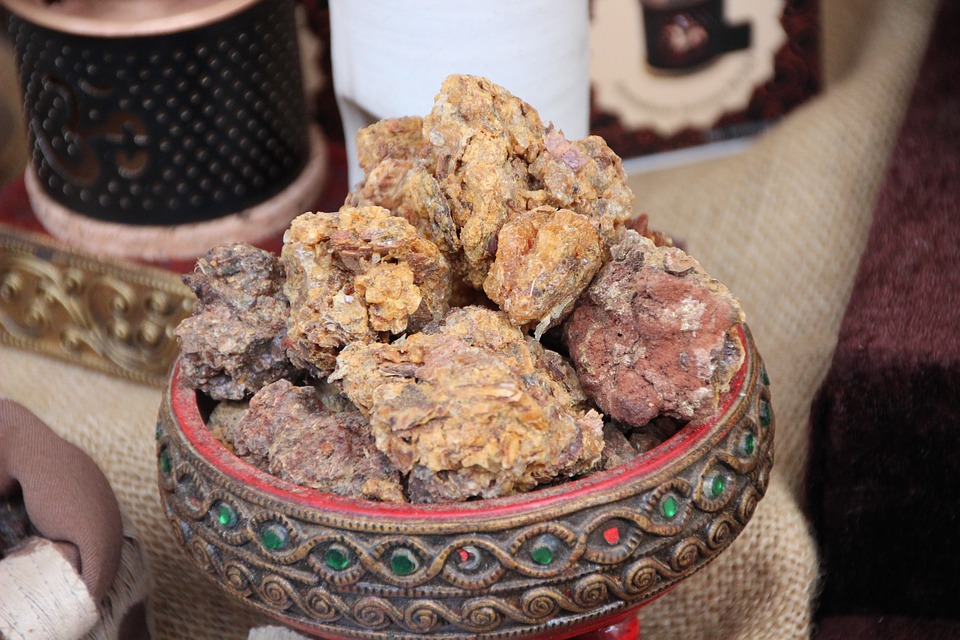Synonyms:
Myrrha, Gum Myrrh
Biological source:
Myrrh consists of the oleo-gum-resin obtained from the stem of Commiphora molmol Eng. and other species of Commiphora of the family Burseraceae.
Geographical source:
Myrrh is collected from the Commiphora plants growing in North-East Africa, particularly Somaliland, and Saudi Arabia.

Macroscopical and microscopical characters:
Myrrh occurs as irregular or round tears or lumps of agglutinated tears of variable size. The tears have a dry surface covered with a fine powder. They are reddish yellow or reddish brown in colour and brittle with an irregular, brown, oily translucent fractured surface. The surface is often marked with whitish marks. Myrrh has an aromatic odour and an aromatic, acrid ·and bitter taste. It yields a yellowish emulsion on triturating with water. It is partially soluble in alcohol.
Chemical constituents:
Myrrh contains a mixture of 2.5 to 8.0 percent of volatile oil, 57 to 61 percent of gum and 25 to 35 percent of resin.
Uses:
Myrrh possesses stimulant and antiseptic properties. It is used as an astringent in mouth-wash preparations. Myrrh also possesses stomachic properties.

I have myrrh I got it from trees, I used it as my personal medicine for any illnesses, as lamp, as epoxy for boat repair very hard when mixed with powdered black ash under high temperature. When I have a sore throat, I just put a gram of it in my nose so that I could sleep well. I was living in an island, no pharmacy, no doctor, I am dependent on myrrh. Today, the island that I left is already a beach resort and a kilo of myrrh is always in my table.